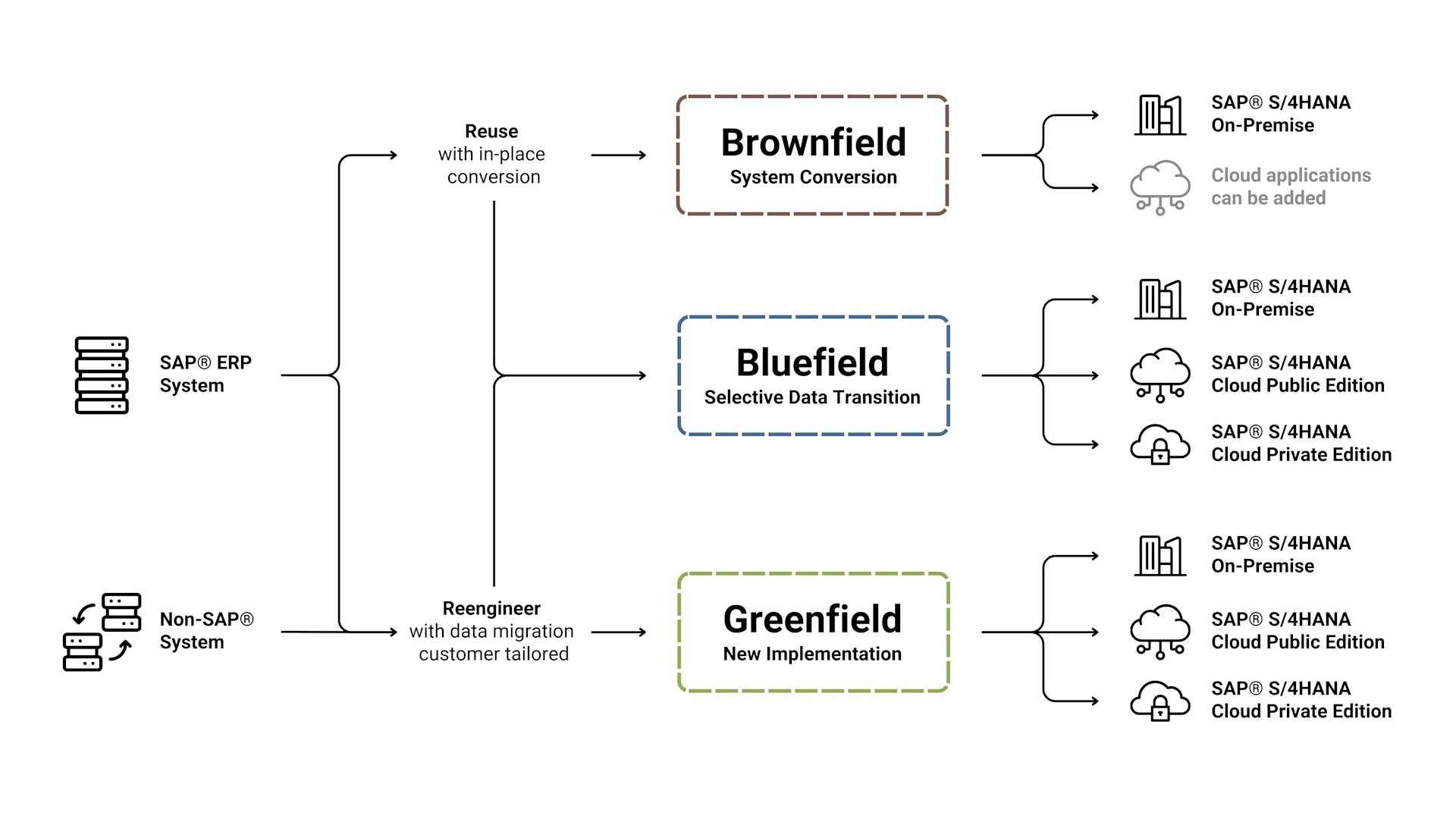Reduce Costs and Increase Flexibility: The Role of EDI in SAP® S/4HANA Migration
|| Solutions
Oct 24, 2024
Reading time: 5 min
Migrating to SAP® S/4HANA involves several key decisions, from choosing the right migration strategy to ensuring seamless EDI integration. While the benefits - increased efficiency, flexibility, and modern IT architecture - are compelling, this significant transition comes with challenges.
In line with the cloud-first strategy, companies must consider new developments when migrating to S/4HANA. The new deployment options replace the existing SAP® PI | PO infrastructure, requiring careful planning for EDI implementation.
This blog provides insight into the fundamentals of a successful SAP® S/4HANA migration process and explains how working with an experienced EDI provider can ease the burden on your team, save costs, and increase efficiency.

SAP® S/4HANA: Countdown to Migration
The launch of SAP® S/4HANA in 2015 marks an important milestone for SAP®. As support for core SAP® Business Suite 7 applications (such as SAP ERP 6.0, SAP CRM 7.0, SAP SCM 7.0, and SAP SRM 7.0) ends in 2027, the need for companies to migrate to S/4HANA is becoming more urgent. The new system offers faster performance, better stability, a modern interface, and incorporates advanced technologies such as AI to handle large data sets in real time and enable informed decision-making.
To mitigate risk and ensure a smooth transition, companies should focus on their migration strategy now. It's an ideal opportunity to modernize IT systems and streamline business processes. The choice between an alternative provider or moving to S/4HANA depends on your business strategy.
SAP® estimates that migrating to S/4HANA takes 12 to 18 months, depending on the size of the organization and the complexity of the system. Companies can choose from three migration approaches, each with a different level of effort:
1. Brownfield Approach
The existing SAP® ERP system is migrated to S/4HANA while maintaining current processes and custom developments. SAP standards and best practices are often minimally integrated, leaving optimization potential untapped. However, this approach typically requires less rework than the greenfield option
2. Bluefield Approach
This hybrid approach combines elements of both Greenfield and Brownfield. Some business areas or processes are implemented from scratch, while others are converted from the existing system.
3. Greenfield Approach
A complete reimplementation of S/4HANA without transferring existing structures. Old processes are redesigned and the system is built using the latest SAP® standard processes and best practices.

When migrating to S/4HANA, companies can choose either on-premises or cloud-based solutions. On-premises offers more control and customization, making it ideal for complex needs or strict regulatory requirements, although maintenance and updates can be more demanding. Cloud-based deployments offer flexibility, lower maintenance costs, and faster deployment. Key benefits include scalability and seamless integration with third-party vendors and emerging technologies.
The Role of EDI in S/4HANA Migration
EDI has become an essential component of modern ERP systems, critical for accelerating and automating business processes. In an S/4HANA environment, fully integrated EDI solutions can realize their full potential by making SAP® the central hub for all B2B data exchange.
Seamless EDI integration enables companies to manage all EDI processes directly through the familiar SAP interface and efficiently monitor messages and transactions. From receiving an order to processing a payment advice, all documents are generated, converted, and sent in the background using the appropriate protocol. The process is centrally managed, giving companies real-time access to message status and full-text search capabilities within SAP® documents to quickly identify and resolve errors.
Benefits of EDI Integration
Efficiency
Automated data exchange minimizes manual intervention, reducing errors and improving processing times.
Flexibility
Companies can efficiently manage global supply chains and adapt to changing market conditions.
Future-Proof
Compliance with international standards, such as Peppol (Pan-European Public Procurement OnLine) for E-Invoicing, ensures smooth integration with global requirements.
Cost Savings
Automating and centralizing EDI processes within SAP® reduces manual effort and frees up IT resources.
EDI Integration in SAP® S/4HANA: Why an External Provider Makes Sense
With S/4HANA, SAP® introduced the Business Partner as the central data object, replacing separate customer (debtor) and vendor (creditor) master data in SAP® ECC. as a central data object, replacing separate customer (debtor) and vendor (creditor) master data in SAP® ECC. This consolidation provides a single view of all business partners and eliminates redundant data structures. Transitioning to this model can be challenging for users, as it requires a significant change to existing workflows within SAP®. Existing EDI processes that rely on the old customer or vendor master data must be adapted to the new structure, often requiring significant adjustments to the master data logic, which in turn affects EDI integration.
External EDI providers can ease this transition by helping to implement the new partner structures and the nuances of the new logic. They can also pre-test these definitions to ensure smooth EDI data exchange after migration, allowing companies to continue to operate efficiently.
Succeed with eddyson as Your EDI Provider
Migrating to SAP® S/4HANA is a strategic opportunity to modernize your IT landscape and position your business for the future. With the right migration strategy and EDI integration, companies can maximize efficiency, increase flexibility and reduce costs.
Partnering with an external EDI provider can significantly ease the migration process and provide long-term benefits, including reduced technical complexity, faster implementation, cost efficiency, and increased security and flexibility. By relying on a provider to handle the technical implementation, maintenance and evolution of EDI processes, internal IT teams can focus on more strategic initiatives.
At eddyson, we bring extensive experience from S/4HANA migration projects with existing customers, combined with an innovative approach to EDI services. Our reusable connections, unique Evolve model with no project costs, and many other custom features set us apart.
Contact us today to discuss your challenges and how we can help
Just fill out the contact form. We guarantee a response within one business day.








